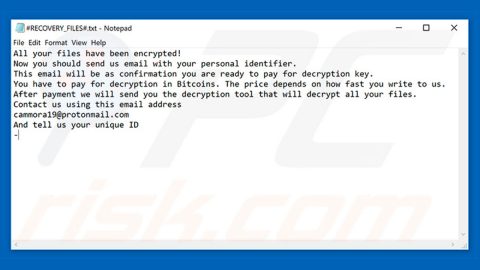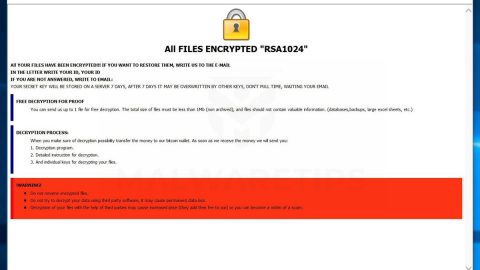What is “This Build of Windows 7 is Corrupted” scam? And how does it work?
“This Build of Windows 7 is Corrupted” scam is yet another tech support scam meant to scare users into believing that their Windows operating system is corrupted and to make them call a fake tech support number. Tech support scams like this one are usually hosted by a malicious domain which also has malicious Java Scripts. Once you’re redirected to a domain hosting the “This Build of Windows 7 is Corrupted” scam, you will see the following message on your screen:
“support.windows.com says:
We are Unable To Locate Windows License Key Data File. It has been deleted from your Computer.
You may have visited Harmful Website recently which has downloaded the Ransom was on your Windows Computer due to which the License Key Data file is deleted.
Your System is Automatically Locked To Prevent Important Data Loss
For Immediate Support Call Windows 7 Help Desk at
Toll-Free: [fake tech support number]”
As you can see, scammers behind this fake alert created a web page aiming to resemble the system properties of a standard Windows computer but if you take a closer look, it’s not hard to put two and two together and determine that the “This Build of Windows 7 is Corrupted” alert is nothing but a copycat.
How does “This Build of Windows 7 is Corrupted” scam circulate the web?
This particular tech support scam, just like the others, circulates the web via malicious domains. Users get redirected to such domains when they click on some suspicious ads on the internet. However, if you deal with these scams on a regular basis, that’s an indication of an adware program installed on your computer. Adware programs are distributed via software bundles found on free sharing sites. To avoid adware programs, you need to select the Custom or Advanced setup every time you install this kind of software package.
Make use of the following detailed guide in removing the “This Build of Windows 7 is Corrupted” scam.
Step 1: If your browser is forced to go into full-screen mode because of the “This Build of Windows 7 is Corrupted” scam, tap F11 in your keyboard to exit.
Step 2: After that, try to close the browser manually. If you find it hard to do so, close the browser through the Task Manager.
Step 3: Tap the Ctrl + Shift + Esc keys to launch the Task Manager.
Step 4: After opening the Task Manager, go to the Processes tab and look for the affected browser’s process and end it by clicking End Task or End Process.

Step 5: Close the Task Manager and reset all the affected browsers to default.
Internet Explorer
- Open Internet Explorer.
- Tap Alt + T and select Internet options.
- Click the General tab and then overwrite the URL under the homepage section.
- Click OK to save the changes.
- Now switch to the Advanced tab and click the Reset button.
- Then check the box for “Delete personal settings” and then click Reset again.
Google Chrome
- Launch Google Chrome, press Alt + F, move to More tools, and click Extensions.
- Look for any other unwanted add-ons, click the Recycle Bin button, and choose Remove.
- Restart Google Chrome, then tap Alt + F, and select Settings.
- Navigate to the On Startup section at the bottom.
- Click on Advanced.
- After that, click the Reset button to reset Google Chrome.
Mozilla Firefox
- Open the browser and tap Ctrl + Shift + A to access the Add-ons Manager.
- In the Extensions menu Remove the unwanted extension.
- Restart the browser and tap keys Alt + T.
- Select Options and then move to the General menu.
- Overwrite the URL in the Home Page section.
- Tap Alt + H to access Help.
- Next, select “Troubleshooting information” and click “Refresh Firefox” at the top of the page.
- Now click “Refresh Firefox” again to confirm the reset.
Step 6: Tap the Win + R keys to open Run and then type in appwiz.cpl to open Control Panel to uninstall the adware program behind the fake alert.
Step 7: Look for the adware program or any unfamiliar program under the list of installed programs and once you’ve found it, uninstall it.

Step 8: Close the Control Panel and tap the Win + E keys to open File Explorer.
Step 9: Navigate to the following directories and look for the adware installer like the software bundle it came with as well as other suspicious files and delete them.
- %USERPROFILE%\Downloads
- %USERPROFILE%\Desktop
- %TEMP%
Step 10: Close the File Explorer and empty your Recycle Bin.
To make sure “This Build of Windows 7 is Corrupted” scam is completely eliminated as well as the adware program behind it, you need to use an efficient program like [product-name]. To use it, follow the advanced steps below:
Perform a full system scan using [product-code]. To do so, follow these steps:
- Turn on your computer. If it’s already on, you have to reboot
- After that, the BIOS screen will be displayed, but if Windows pops up instead, reboot your computer and try again. Once you’re on the BIOS screen, repeat pressing F8, by doing so the Advanced Option shows up.
- To navigate the Advanced Option use the arrow keys and select Safe Mode with Networking then hit
- Windows will now load the SafeMode with Networking.
- Press and hold both R key and Windows key.
- If done correctly, the Windows Run Box will show up.
- Type in the URL address, [product-url] in the Run dialog box and then tap Enter or click OK.
- After that, it will download the program. Wait for the download to finish and then open the launcher to install the program.
- Once the installation process is completed, run [product-code] to perform a full system scan.
- After the scan is completed click the “Fix, Clean & Optimize Now”button.
















